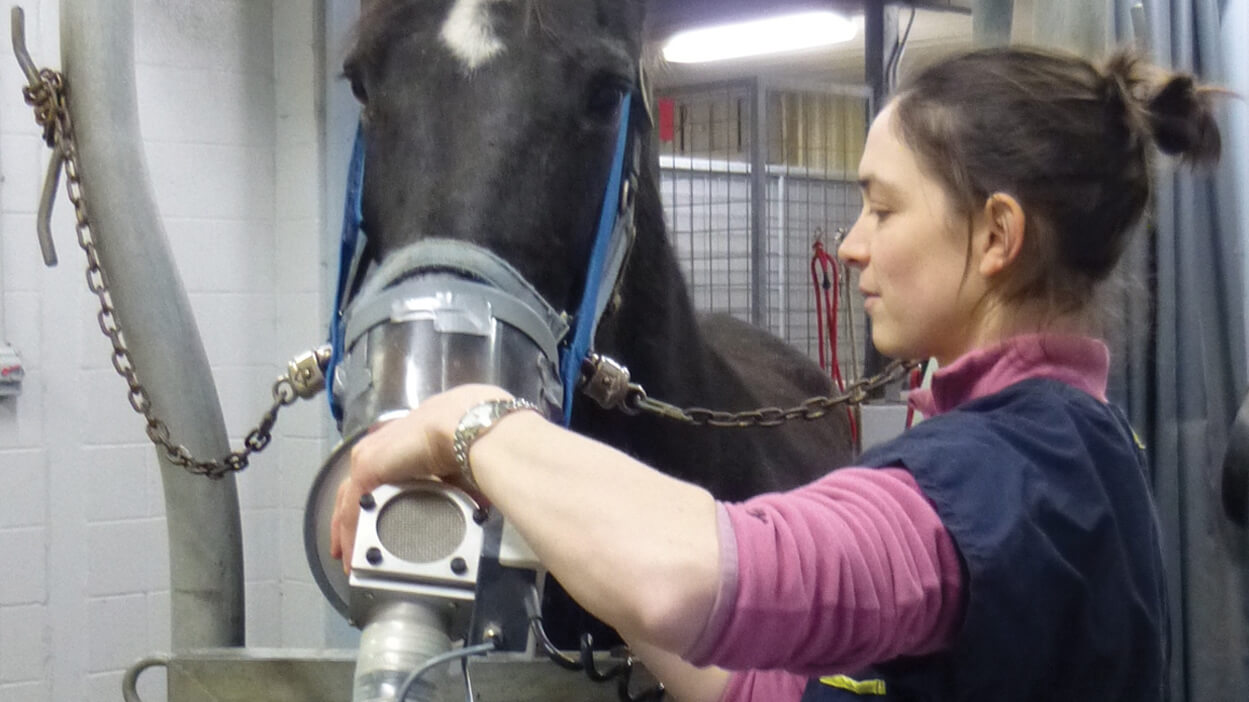Dr. Jean-Pierre Lavoie and Dr. Mathilde Leclère at the University of Montreal Faculty of Veterinary Medicine continually research airway remodeling, inflammation and the role of the microbiome in equine asthma. Two of their recent studies showed the efficacy of new inhaled corticosteroids (budesonide and ciclesonide). Both improved lung function significantly in severely asthmatic horses (formerly known as heaves or recurrent airway obstruction).
In a different project, Dr. Estelle Manguin showed that the combination of inhaled corticosteroids (fluticasone) and a long-acting bronchodilator (salmeterol) improves lung function and oxygen diffusion in equine asthma, with a more rapid and more persistent effect than when horses are treated with a bronchodilator alone.
Other interesting findings include Dr. Gwladys Malek’s research showing that taking bilateral thoracic radiographs (instead of only on one side) increases the detection of lesions in horses with pneumonia. Further, Dr. Sophie Mainguy-Seers reported that there was little benefit to adding an antimicrobial in the treatment of severe equine asthma. She also reported that inhaled dexamethasone offers no efficacy or safety advantages over the same drug administered orally. Dr. Amandine Bessonnat showed that intra-articular administration of triamcinolone, a corticosteroid commonly used to treat joint diseases, is as potent as the same drug administered intramuscularly at improving the lung function of asthmatic horses, potentially masking this condition and the implementation of appropriate therapy. Dr. Clementine Gy identified blood biomarkers for the diagnosis of moderate asthma in horses.

